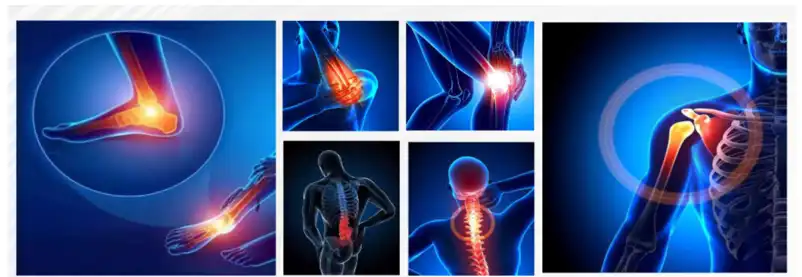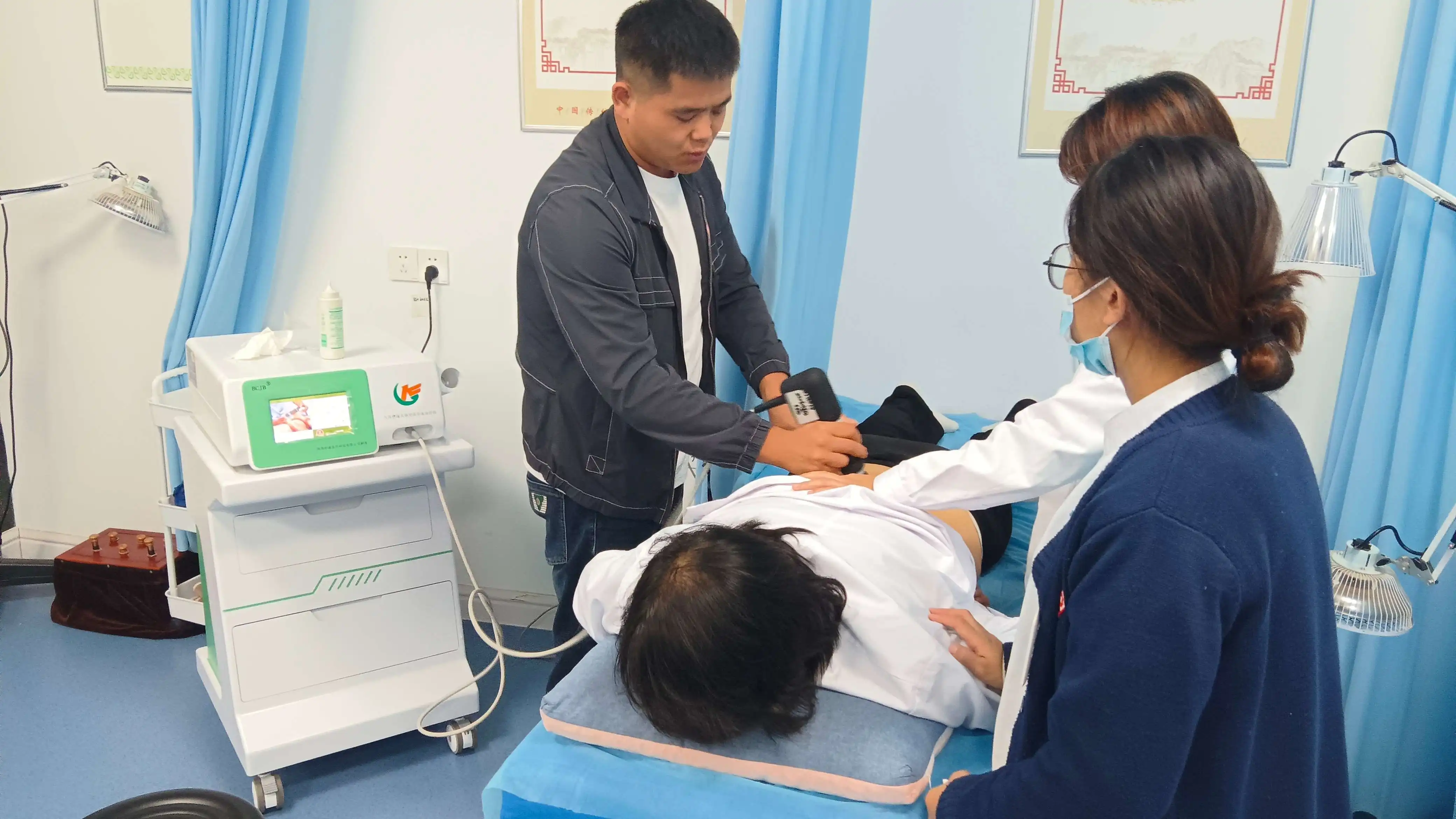Shockwave therapy has emerged as a highly effective treatment option for a wide range of medical conditions, from musculoskeletal disorders to soft - tissue injuries. At the heart of this therapy are different types of shockwaves, each with its own unique characteristics and applications. In this blog post, we will explore the three main types of shockwaves and their significance in the context of shockwave machine therapy.

Electrohydraulic Shockwaves
Electrohydraulic shockwaves are among the earliest types of shockwaves used in medical applications. They are generated within a shockwave machine therapy device through a process that involves an electrical discharge in a water - filled chamber. When a high - voltage electrical current is applied between two electrodes immersed in water, a spark is created. This spark rapidly vaporizes the surrounding water, forming a plasma bubble. As the plasma bubble expands and then collapses, it generates a powerful shockwave.
The shockwaves produced by electrohydraulic systems are known for their high energy levels. This makes them particularly suitable for treating conditions that require deep tissue penetration and significant tissue remodeling. For example, in orthopedic applications, an electrohydraulic shockwave machine therapy device can be used to treat conditions like plantar fasciitis. The high - energy shockwaves can reach deep into the plantar fascia, breaking down calcifications and promoting tissue repair. The shockwaves stimulate the body's natural healing mechanisms, encouraging the growth of new blood vessels and the regeneration of damaged tissue.
Another area where electrohydraulic shockwave machine therapy is commonly used is in the treatment of non - union fractures. The shockwaves can help to stimulate the bone - healing process by enhancing the activity of osteoblasts, the cells responsible for bone formation. By delivering a series of well - calibrated shockwaves to the fracture site, the electrohydraulic shockwave machine therapy can increase the likelihood of successful bone union.
Electromagnetic Shockwaves
Electromagnetic shockwaves are generated using a different principle. In an electromagnetic shockwave machine therapy device, an electromagnetic coil is used. When an electrical current passes through the coil, it creates a magnetic field.
This magnetic field then interacts with a metal membrane or a projectile. The interaction between the magnetic field and the metal object causes the membrane or projectile to rapidly accelerate, generating a shockwave.
One of the key advantages of electromagnetic shockwaves is their precise control. The energy and frequency of the shockwaves can be accurately adjusted according to the specific needs of the patient and the condition being treated. This makes electromagnetic shockwave machine therapy highly versatile. For instance, in the field of urology, electromagnetic shockwave machines are used for treating kidney stones. The shockwaves can be precisely targeted at the stones, breaking them into smaller fragments that can then be more easily passed out of the body.
In sports medicine, electromagnetic shockwave machine therapy is often used to treat tendonitis. The shockwaves can be adjusted to a specific energy level that is effective in treating the inflamed tendon tissue without causing excessive damage to the surrounding healthy tissue. The ability to fine - tune the shockwave parameters allows for a more personalized treatment approach, which is crucial for achieving optimal results.
Piezoelectric Shockwaves
Piezoelectric shockwaves are generated through the piezoelectric effect. Piezoelectric materials, such as certain ceramics, have the property of generating an electric charge when mechanical stress is applied to them. In a piezoelectric shockwave machine therapy device, an array of piezoelectric crystals is used. When an electrical voltage is applied to these crystals, they expand and contract rapidly. This rapid expansion and contraction generate shockwaves.
Piezoelectric shockwaves are known for their relatively lower energy levels compared to electrohydraulic shockwaves, but they still offer significant therapeutic benefits. They are often used in applications where a more gentle, yet effective treatment is required. For example, in dermatology, a piezoelectric shockwave machine therapy device can be used to improve skin texture and reduce the appearance of scars. The shockwaves stimulate the fibroblasts in the skin to produce more collagen, which helps to smooth out the scar tissue and improve the overall appearance of the skin.
In the treatment of chronic wounds, piezoelectric shockwave machine therapy can also play a role. The shockwaves can enhance blood circulation in the wound area, promoting the delivery of oxygen and nutrients to the cells. This can accelerate the wound - healing process and reduce the risk of infection. The gentle nature of piezoelectric shockwaves makes them suitable for treating delicate tissues, such as those in the skin and soft - tissue areas.
Comparing the Three Types in Shockwave Machine Therapy
Each of the three types of shockwaves - electrohydraulic, electromagnetic, and piezoelectric - has its own set of advantages and is suitable for different applications in shockwave machine therapy. Electrohydraulic shockwaves, with their high energy, are ideal for deep - seated and more severe conditions that require significant tissue remodeling. Electromagnetic shockwaves offer precise control, making them versatile for a wide range of applications where customization is key.
Piezoelectric shockwaves, on the other hand, are gentle and well - suited for treating delicate tissues and conditions where a more subtle approach is needed.
When choosing a shockwave machine therapy device for a particular patient, healthcare providers must consider various factors. These include the nature and severity of the condition, the location of the affected tissue, and the patient's overall health. For example, a patient with a large, calcified tendon injury may benefit more from electrohydraulic shockwave machine therapy, while a patient with a minor skin scar may be better served by a piezoelectric shockwave machine.

Shaanxi Miaokang Medical Technology Co., Ltd had R&d and produce shockwave machine therapy
is a comprehensive integrator engaged in medical instrument research and development, sales, medical technology research and promotion, and investment in medical institutions. The main research and development of medical ozone therapy equipment, extracorporeal shock wave therapy equipment and other products.
If you had any questions,feel free to contact us:Cathy@miaokang.ltd
In conclusion, understanding the three types of shockwaves - electrohydraulic, electromagnetic, and piezoelectric - is essential for healthcare professionals and patients alike when considering shockwave machine therapy. Each type offers unique capabilities, and by choosing the right type of shockwave and the appropriate shockwave machine, optimal treatment outcomes can be achieved for a variety of medical conditions.






